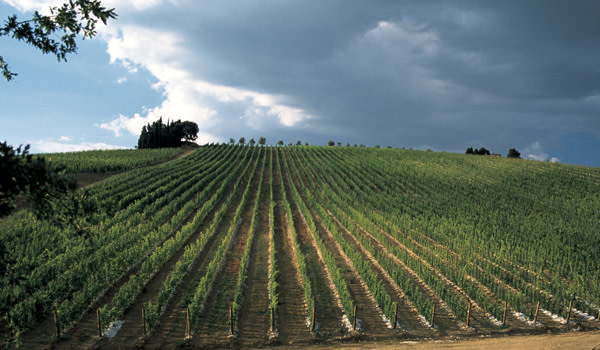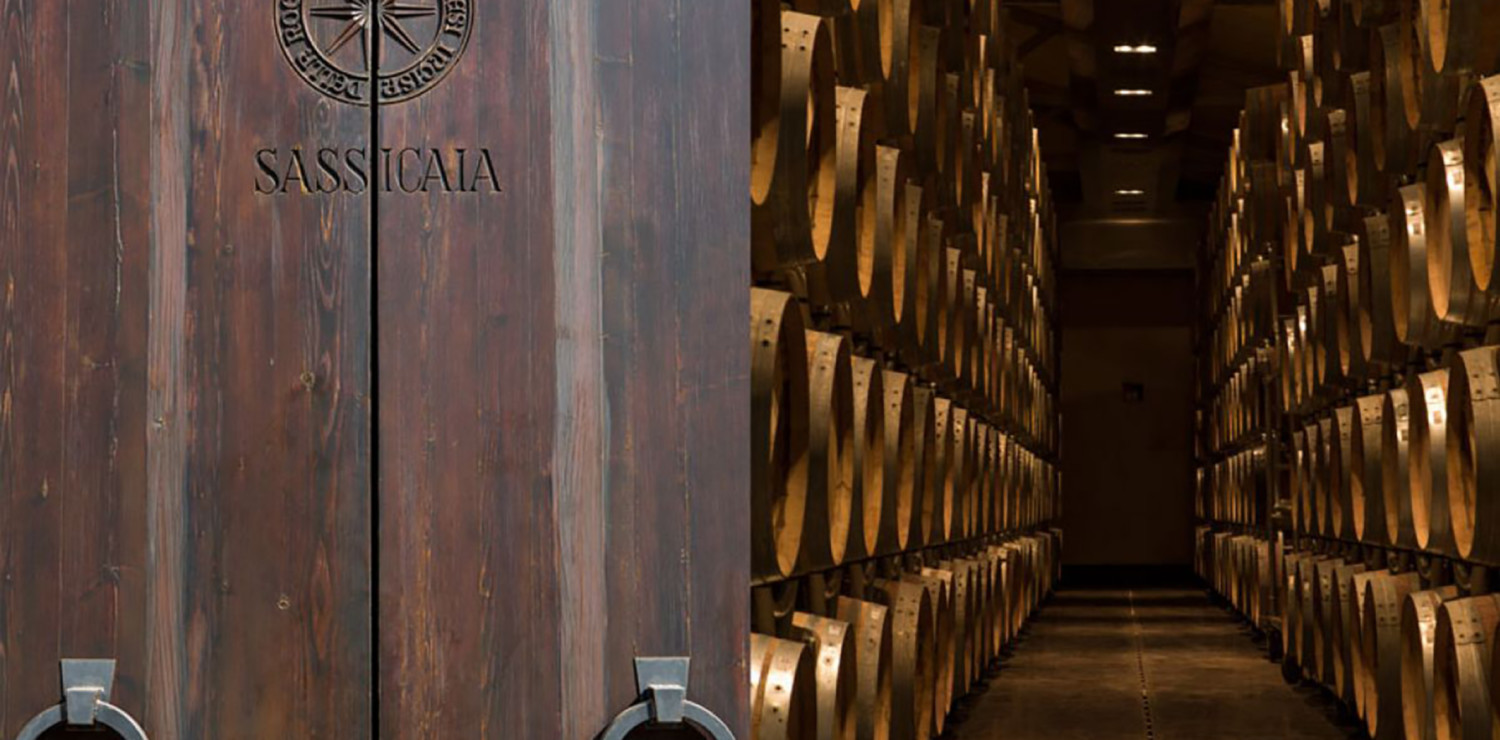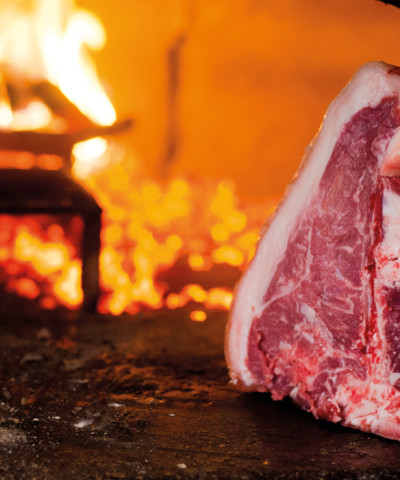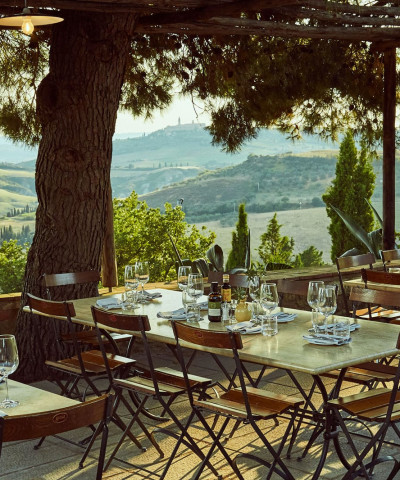The 13 great Tuscan wines that you can't not know about
The labels that have written the history of Tuscan wine. Stories of courage, foresight and... a bit of madness narrated by an exceptional champion. Starting with the wine that is on top of the world this year
Undulating hills that could have been drawn with a compass, strips of coastal plain, wide valleys, the Apuan Alps, with their famous marble quarries, that hide and reveal the sea, intermountain basins which were once lakes, Lunigiana, Garfagnana and Mugello, and the Tuscan Apennines, from Pratomagno to the Chianti Hills and Monte Amiata, the last mountainous bastion towards the sea to the south.
The Tuscan landscape is among the most varied, and these features are also reflected in its wines. The impression is not one of specialization, but of agriculture that has its strength in diversity. From Maremma to the Val d’Orcia, from Bolgheri to the Chianti Hills, the climate changes, as does the soil, clayey in one place, and volcanic in another, marl-like galestro and then sand, clay and limestone albarese and sandstone.
 The Tuscan territory dotted with excellent grape varieties
The Tuscan territory dotted with excellent grape varietiesTuscany is an example of excellence, where family-run small enterprises co-exist alongside great wineries. Wine production is focused mainly on reds, among which Sangiovese reigns supreme, together with its various clones. “The first duty of wine is to be red, then comes all the rest”, according to an early 19th century French proverb. A proverb which Tuscany has every right to appropriate, being the land of great reds, unique wines that often go beyond excellence, with a timeless appeal that has earned them their rightful place in the pantheon of the world’s great wines. There isn't a wine shop in Italy that doesn't have great Tuscan labels on display, but their presence is a constant in the main wine lists all over the world.
1. Brunello di Montalcino Riserva, Tenuta Il Greppo di Biondi Santi. The tradition of Sangiovese
The first great Tuscan wine in the modern sense dates back to the end of the 19th century and is due to the countercurrent yet far-sighted activity of Ferruccio Biondi Santi, the father of Brunello di Montalcino, who sensed that proper cultivation and vinification of Sangiovese could produce a structured and long-lived wine. He developed the project for this wine on the family estate Il Greppo, which is located at the top of the Montalcino hill. He selected the plants of a variety of Sangiovese identified as the best, that is Sangiovese grosso or brunello, and reproduced them in a vineyard, which he cultivated with a lower yield of grapes than was the practice, thinking from the beginning to the maximum quality instead of quantity; contrary to the practice he vinified these grapes with a long maceration and kept the wine obtained for a long time in wooden barrels. The basic goal was not a wine to be consumed or sold in few months, on the contrary he had in mind a wine that could evolve over the years to compete with the great Château of Bordeaux. He succeeded and since then Brunello di Biondi Santi has never ceased to represent an excellence of the Montalcino territory and of Italian oenology. Starting in 1888 and only in the best vintages and from the oldest plants is Brunello di Montalcino Riserva - Tenuta Il Greppo di Biondi Santi, which with the 1955 vintage entered as the only Italian wine in the ranking of the 12 wines of the 20th century, compiled by the magazine "Wine Spectator". The glass shows a shade of ruby red penetrated by the light, which over time turns towards the grenade until it takes on precious orange nuances. Its scents are elegant and concentrated: orange and cherry peel often make their debut, intense spicy fragrances of withered violet petals, together with cigar and undergrowth, can also recall meat and leather. It impresses the palate with a refined and relaxed texture thanks to the mastery of perfect tannins, which maintain their energy for a long time and create the taste space for an endless fruity and savoury progression.
2. Sassicaia. The Bolgheri phenomenon
The boom of the wines of the Tuscan Coast is relatively recent and it was Sassicaia, on the market since 1972, vintage 1968, that was the forerunner of an incredible oenological progress of the coastal provinces of the region. What will become the most renowned label in Tuscany was born as a house wine from a piece of land that Mario Incisa della Rocchetta, originally from Piedmont, had as a wedding dowry; but for 20 years it was just a family wine, to give to friends, with no commercial outlet. The Marquis Incisa della Rocchetta, a lover of horses and great French wines, had decided to plant cabernet sauvignon in 1944, with Bordeaux wines in mind. Nobody liked his wine at first, it was an innovative wine, far from the local taste, and remained anonymous for 20 years, until with the support of his brother-in-law, Niccolò Antinori, and oenologist Giacomo Tachis, consultant of the Antinori, the wine was put on the market. With the 1980, 1981 and then 1985 vintages, it was an enormous worldwide success, whose scope has not yet been exhausted. Sassicaia triggered a chain reaction in the area and throughout the region, but it remained labeled as a table wine for a long time, because the first Bolgheri DOC in 1983 only covered Sangiovese and Trebbiano; only with the revision of the specifications in 1994 did it become DOC. Bolgheri Sassicaia is made from 85% Cabernet Sauvignon and 85% Cabernet Franc, and matures for two years in barriques, a third new each year. When young it has the brilliant appearance of a ruby, dense and vivid, it releases a bouquet of concentrated scents with a balsamic opening that precedes berries and fresh flowers, but evolves in the glass also releasing hints of chocolate, myrtle, spices, graphite. Over time, the color turns to garnet red but does not lose thickness and the nose turns to orange and candied cherries, macerated fruit and carnaceous and salty sensations. On the palate it shows an elegant and prodigious development: like a skein that unfolds and conquers the whole mouth with the vibration of silky tannins. It has a very long mineral finish that in some vintages may recall truffles or game. We remember the great 2015 vintage that brought Sassicaia to the roof of the world: it has been named Wine Spectator’s No. 1 Wine of the Year.
3. Masseto, Tenuta dell'Ornellaia
Bolgheri has been defined an "Eldorado of wine", home of experimentation, which a few years later brought to light another memorable bottle: Masseto, pure merlot, which with the 1988 vintage in a blind tasting defeated the great French and Californian merlot. Masseto comes from a very special vineyard of Tenuta dell'Ornellaia, the company founded by Lodovico Antinori, who, with a characterful spirit of his own, wanted to move away from the family business. Right from the start, Tenuta dell'Ornellaia aimed exclusively to produce high-end wines, making use of international collaborations of the highest level. The Masseto vineyard is very particular: it has a soil that stands out from the rest of Bolgheri, as it is a single block of Pliocene and Pleistocene clay that can recall the Pomerol soil. Here the merlot grapes acquire an extraordinary polyphenolic richness that in the wine declines in great depth. In the glass, the Masseto appears impenetrable to the eye and intoxicates the nose with an endless array of scents that parade one after the other without dampening the intensity. Everything in him is exalted to the maximum: the fruitiness of merlot, the fragrance of the Mediterranean maquis, the profusion of spices and the smell of roasting to show mineral and ferrous traits. On the palate it is voluminous and imposing, it has integrated and velvety tannins that bind to balsamic reverberations that remain in the mouth for a long time. Today Masseto is one of the few Italian wines listed on the British stock exchange index of the world's great wines.
4. Tignanello. The revolution of the Supertuscans
Another revolutionary project was the one that in Antinori's house, in the Chianti Classico area, determined the origin of Tignanello, which represents a model of excellence and elegance. Tignanello is a beautiful vineyard in the San Casciano area, rich in white stones placed at the base of the plants to reflect the heat and sunlight on the bunches. In 1970 Tignanello made its debut with the Chianti Classico Riserva appellation, with the classic blend in vogue at the time, which included, in addition to Sangiovese and Colorino, the presence of white grapes (Trebbiano and Malvasia). But already the following year the wine rebelled against tradition to follow a different model: international grape varieties were adopted in the blend with Sangiovese, leading to the exit from the Chianti Classico appellation to become a table wine; but in reality we are facing one of the first Supertuscans, those wines of character and elegance that aim for excellence. Making Tignanello together with Piero Antinori was Giacomo Tachis, the same oenologist of Sassicaia. For the first time the Sangiovese leaves the large cask and is raised in French barriques. Every moment of the production of this great wine is carried out with meticulous dedication: the care of the vineyard is modern, made with great intensity of planting and low yields per plant, so as to maximize the amount of extractive substances in the must and equally precise and accurate are all the winemaking activities carried out with the aim of excellence. An elegant wine at sight for its bright ruby colour, rich in intense and penetrating scents, round and enveloping to the taste: a wine always sensational!
5. Pergole Torte
How could we forget the first wine made exclusively with Sangiovese grapes in the whole of Chianti Classico? It was 1977 when the first Pergole Torte label was produced under the supervision of Sergio Manetti, who along the way encountered a true master-taster and Sangiovese connoisseur, the legendary “Bicchierino” or “little glass”, alias Giulio Gambelli. A wine which was the forerunner of all the forms of marketing which appeared twenty years later, based on stories, serious or not so serious, about the territory, indigenous vines, crus and so on. Chianti Sangiovese at its most authentic and refined.
6. Grattamacco
In the same year, Piermario Meletti Cavallari moved from Bergamo to the Bolgheri hills, and in 1982 created Grattamacco Rosso, initially a blend of Cabernet and Sangiovese. Today he is still one of the few to maintain Sangiovese in the Bolgheri area.
7. Cepparello
“My aim was to achieve an improvement in the quality of the product, and the first steps in that sense were a study of clonal selection of Sangiovese and its single-variety vinification to fully understand its potential”, said Paolo de Marchi in 1980, when he made Cepparello, which takes its name from the small stream that runs through the vineyards.
8. Solaia
When we speak of Supertuscans, one of the first names that comes to mind is undoubtedly Solaia. Produced for the first time in 1978, it joined the ranks of the most celebrated Tuscan reds almost by right, and continues to remind us of the role – now wilfully forgotten – that Cabernet played in the first stage of the region’s winemaking renaissance.
9. I Sodi di San Niccolò, Castellare
In 1979, peasants in the Chianti region coined the term “I Sodi”, to describe those vineyards on steep slopes with hard-to-till soil, which then became the name of the Castellare estate’s flagship wine. Going against the fashion of the time, it was one of the first Super Tuscans to bet on Sangiovese and on indigenous vines in general. Over the years, I Sodi di San Niccolò has maintained its distinctiveness, its severe, uncoquettish character, more inclined to arouse respect than pure emotion.
10. Flaccianello della Pieve, Fontodi
Then there is the Flaccianello della Pieve by Fontodi, an energetic, intense, tasty, long-lived wine with character, born in an exceptional territory. Flaccianello della Pieve, a pure Sangiovese produced from the best grapes of the company, contains in the glass the perfect combination of life, work and nature. Produced in the heart of Chianti Classico, more precisely in the valley south of Panzano, the so-called "Conca D'oro", a natural amphitheatre between 350 and 450 meters above sea level, particularly suited to the cultivation of vines and the production of great wines, Flaccianello represents the liveliness of a village festival, the welcome and conviviality of the people of Chianti, the exuberance of a character like the butcher poet Dario Cecchini, true but not vulgar.
11. Fontalloro, Félsina
Fontalloro di Félsina is a well-structured wine, vigorous and lively, which matures slowly and is unlikely to show signs of decline.
12. Messorio, Le Macchiole
In just a few years Le Macchiole’s Messorio has become one of the world’s most highly rated Merlots.
13. Caberlot, Podere Carnasciale
Last but not least is Podere Carnasciale’s Caberlot varietal, a spontaneous crossing, a hybrid, that has found its fullest expression in Valdarno. Produced since 1988, it is bottled only in magnums to underscore its regality.











